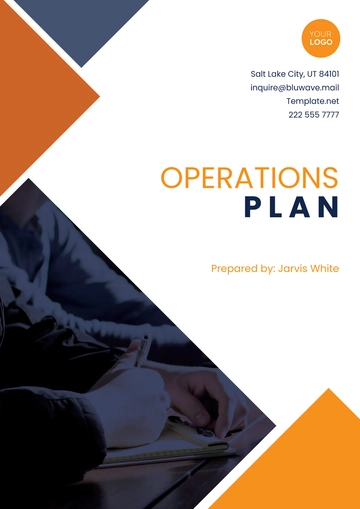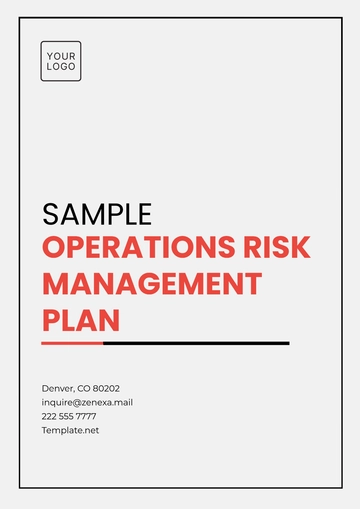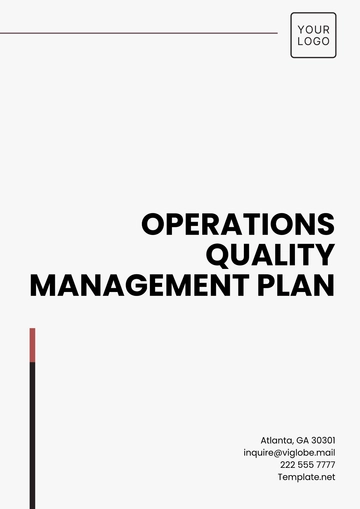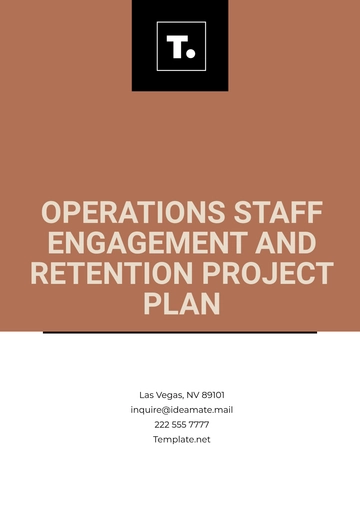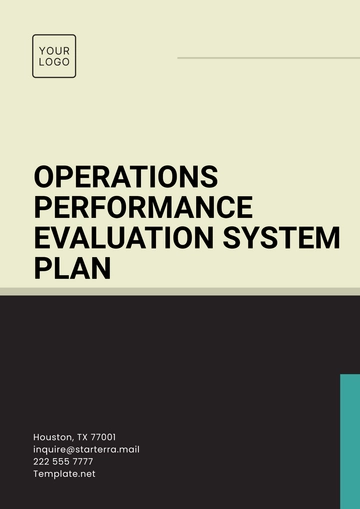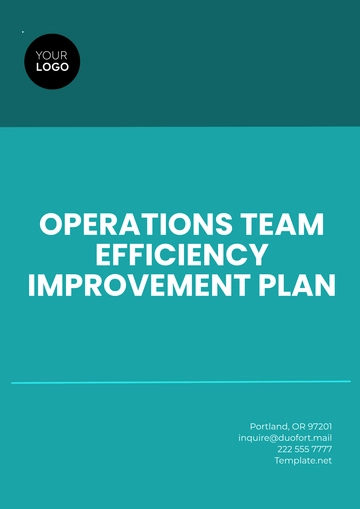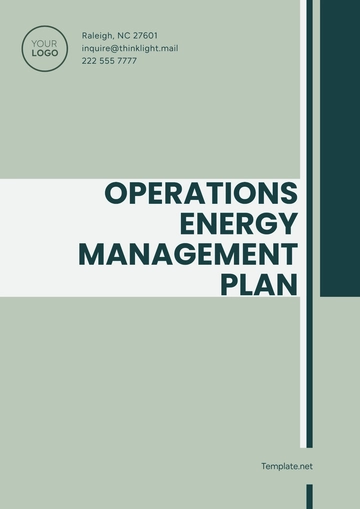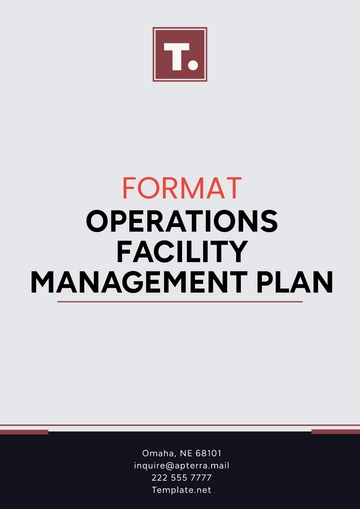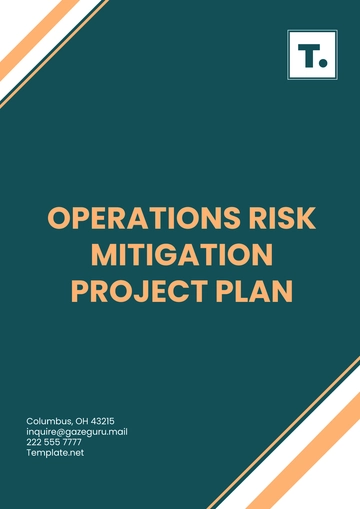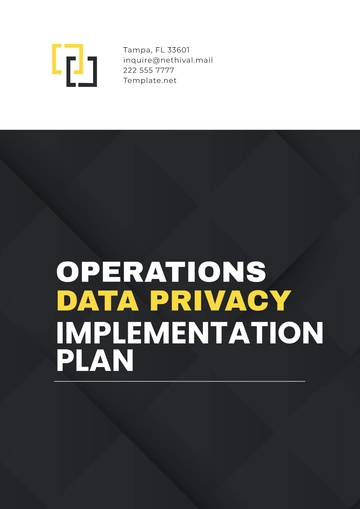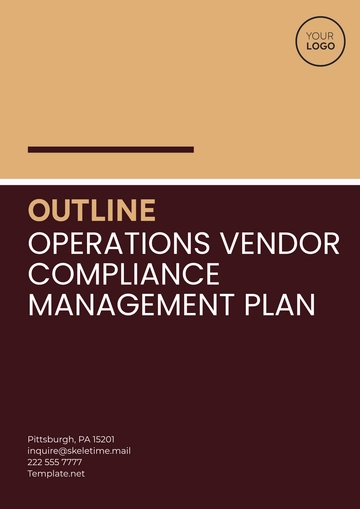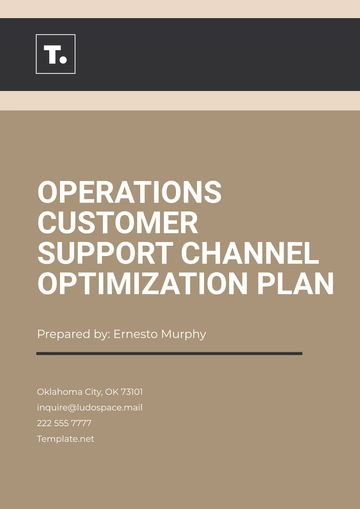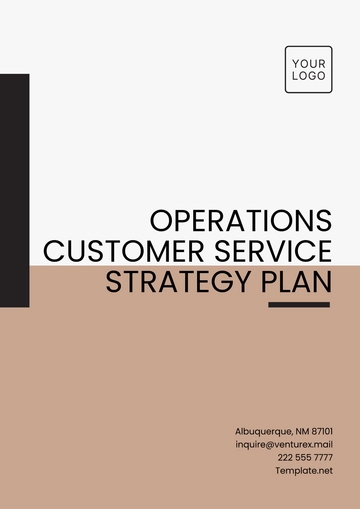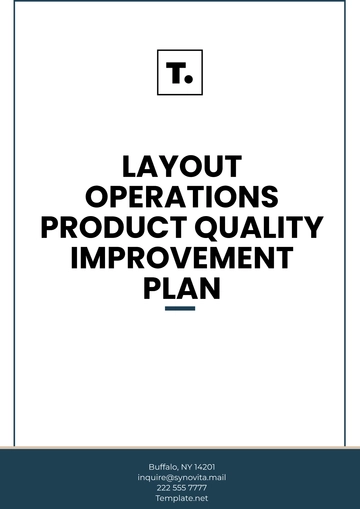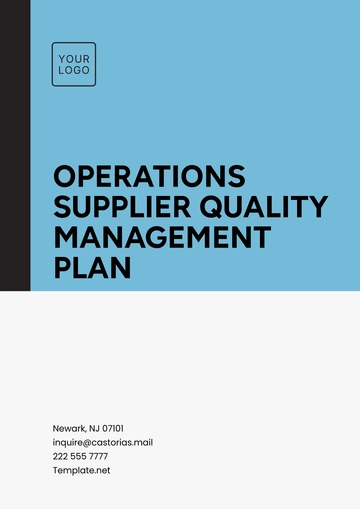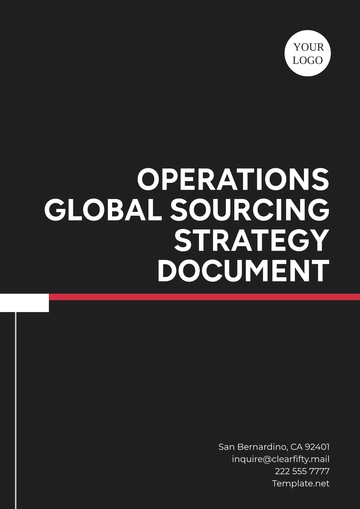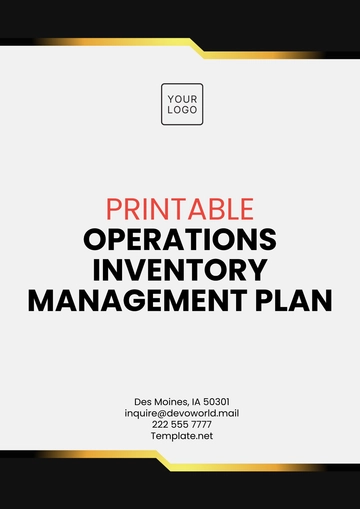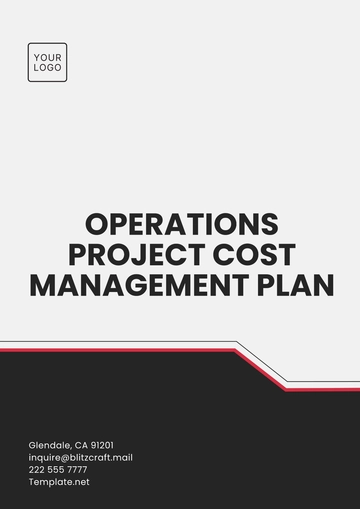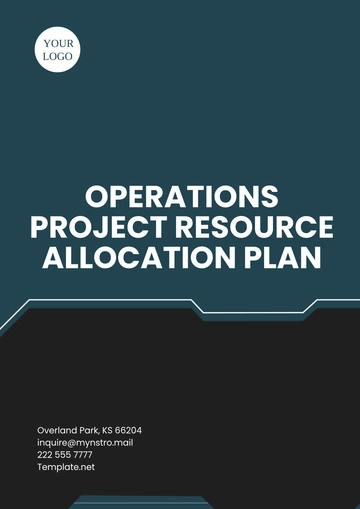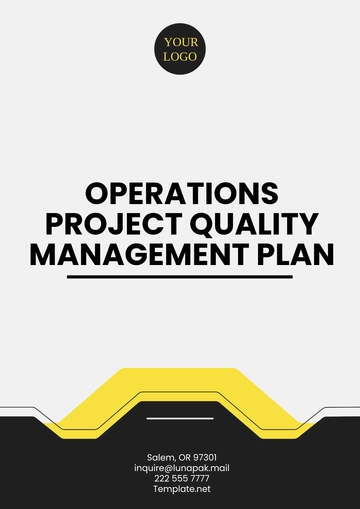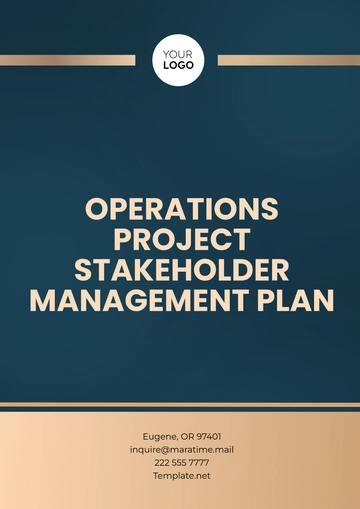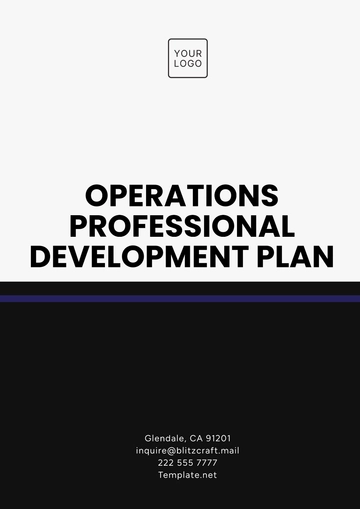Free Marketing Operational Plan
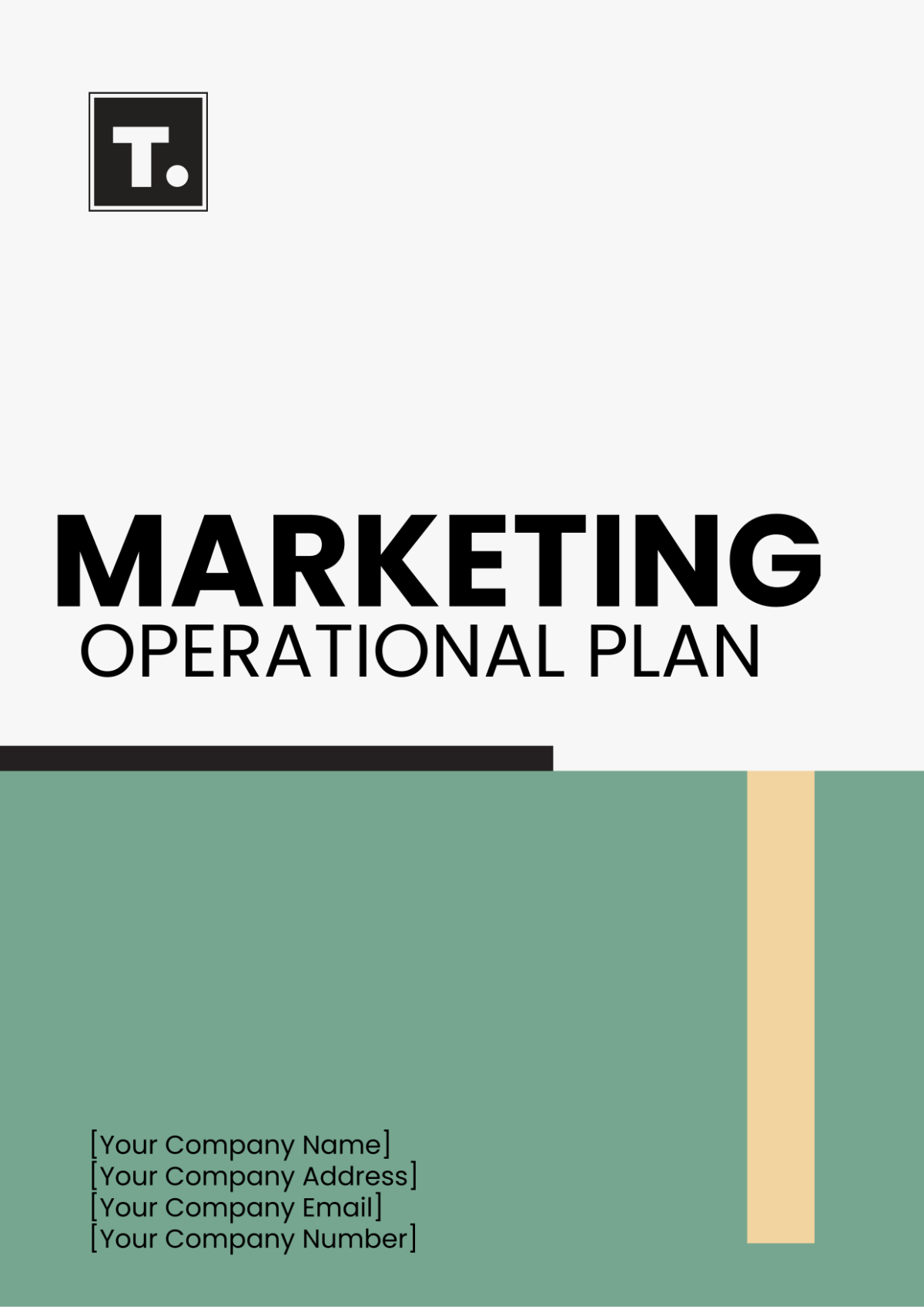
Prepared by: | [Your Name] |
Date: | [DATE] |
I. Executive Summary
The Executive Summary provides a concise overview of the marketing operational plan, outlining key objectives, strategies, and tactics to be implemented within the specified timeframe. In the year 2050, [Your Company Name] aims to solidify its position as a leader in the industry through innovative marketing strategies and customer-centric initiatives. This operational plan outlines our approach to achieving these goals.
II. Introduction
The Introduction section provides context for the marketing operational plan, including an overview of the market landscape, target audience demographics, and competitive analysis. As the market evolves and consumer preferences shift, [Your Company Name] recognizes the need to adapt and innovate. This introduction sets the stage for our marketing efforts in the rapidly changing landscape of 2050 and beyond.
III. Goals and Objectives
This section outlines the specific goals and objectives of the marketing operational plan, including measurable metrics for success and key performance indicators (KPIs) to track progress. By 2050, [Your Company Name] aims to increase market share by 25%, enhance brand awareness by launching a new advertising campaign, and improve customer satisfaction by implementing personalized marketing strategies tailored to individual preferences.
Marketing Goals and Objectives
Goals | Objectives |
|---|---|
goals objectives market share by 25% | Launch targeted marketing campaigns |
Expand distribution channels | |
Enhance product visibility | |
Partner with key industry influencers | |
Enhance brand awareness | Launch a new advertising campaign |
Increase social media presence | |
Sponsor industry events | |
Improve customer satisfaction | Implement personalized marketing strategies |
Enhance customer support services | |
Gather feedback through surveys and focus groups |
IV. Strategies
Strategies delineate the overarching approach to achieving marketing objectives, encompassing market positioning, branding, messaging, and customer engagement strategies. In 2050, [Your Company Name] will focus on differentiation through product innovation, emphasizing sustainability and social responsibility. Our marketing strategies will highlight these unique selling points to resonate with environmentally conscious consumers.
V. Tactics
Tactics detail the specific actions and initiatives to be executed in support of the overarching marketing strategies, including campaign planning, content creation, advertising, and promotional activities. To achieve our goals, [Your Company Name] will launch a series of digital marketing campaigns targeting key demographics, create engaging content for social media platforms, and leverage influencer partnerships to amplify brand visibility.
Marketing Tactics
Marketing Channel | Planned Activities |
|---|---|
Digital Marketing Campaigns | SEO optimization |
PPC advertising | |
Email marketing | |
Social Media | Content creation (posts, stories, videos) |
Community engagement | |
Influencer partnerships | |
Events | Sponsorship |
Booth presence | |
Product demonstrations | |
Content Marketing | Blog posts |
Infographics | |
Whitepapers | |
Webinars |
VI. Resource Allocation
Resource Allocation outlines the budgetary and human resource requirements for implementing the marketing operational plan, including allocation of funds, staffing needs, and technology investments. In 2050, [Your Company Name] will allocate 30% of its marketing budget to digital advertising, 20% to research and development for product innovation, and 50% to talent acquisition and training to support our growing marketing team.
VII. Timeline
The Timeline section provides a detailed schedule for the execution of marketing activities, including milestones, deadlines, and dependencies to ensure timely implementation. Key milestones for 2050 include the launch of our new advertising campaign in Q1, the rollout of product updates in Q2, and the expansion of our social media presence in Q3.
VIII. Monitoring and Evaluation
This section outlines the process for monitoring and evaluating the effectiveness of marketing initiatives, including regular performance reviews, data analysis, and adjustments based on insights gained. [Your Company Name] will utilize advanced analytics tools to track campaign performance, measure customer engagement metrics, and conduct surveys to gather feedback for continuous improvement.
Key Performance Indicators (KPIs)
KPI | Measurement Method |
|---|---|
Market Share | Sales data |
Brand Awareness | Brand mentions on social media |
Customer Satisfaction | Customer feedback surveys |
Digital Campaign Performance | Click-through rates |
Conversion rates | |
Social Media Engagement | Likes, shares, comments |
Follower growth rate |
IX. Conclusion
The Conclusion summarizes key takeaways from the marketing operational plan and reiterates the importance of aligning marketing efforts with broader business goals. As we embark on this journey into the future, remain committed to innovation, excellence, and customer satisfaction. By executing this operational plan with diligence and adaptability, we will achieve our marketing objectives and drive sustainable growth in 2050 and beyond.
- 100% Customizable, free editor
- Access 1 Million+ Templates, photo’s & graphics
- Download or share as a template
- Click and replace photos, graphics, text, backgrounds
- Resize, crop, AI write & more
- Access advanced editor
Optimize your marketing strategy with the Marketing Operational Plan Template from Template.net. This editable and customizable template offers a comprehensive framework for planning and executing marketing campaigns. Tailor it to your specific needs using our Ai Editor Tool, ensuring flexibility and precision in your strategy. Elevate your marketing efforts with this professionally designed template, guiding you toward campaign success.
You may also like
- Finance Plan
- Construction Plan
- Sales Plan
- Development Plan
- Career Plan
- Budget Plan
- HR Plan
- Education Plan
- Transition Plan
- Work Plan
- Training Plan
- Communication Plan
- Operation Plan
- Health And Safety Plan
- Strategy Plan
- Professional Development Plan
- Advertising Plan
- Risk Management Plan
- Restaurant Plan
- School Plan
- Nursing Home Patient Care Plan
- Nursing Care Plan
- Plan Event
- Startup Plan
- Social Media Plan
- Staffing Plan
- Annual Plan
- Content Plan
- Payment Plan
- Implementation Plan
- Hotel Plan
- Workout Plan
- Accounting Plan
- Campaign Plan
- Essay Plan
- 30 60 90 Day Plan
- Research Plan
- Recruitment Plan
- 90 Day Plan
- Quarterly Plan
- Emergency Plan
- 5 Year Plan
- Gym Plan
- Personal Plan
- IT and Software Plan
- Treatment Plan
- Real Estate Plan
- Law Firm Plan
- Healthcare Plan
- Improvement Plan
- Media Plan
- 5 Year Business Plan
- Learning Plan
- Marketing Campaign Plan
- Travel Agency Plan
- Cleaning Services Plan
- Interior Design Plan
- Performance Plan
- PR Plan
- Birth Plan
- Life Plan
- SEO Plan
- Disaster Recovery Plan
- Continuity Plan
- Launch Plan
- Legal Plan
- Behavior Plan
- Performance Improvement Plan
- Salon Plan
- Security Plan
- Security Management Plan
- Employee Development Plan
- Quality Plan
- Service Improvement Plan
- Growth Plan
- Incident Response Plan
- Basketball Plan
- Emergency Action Plan
- Product Launch Plan
- Spa Plan
- Employee Training Plan
- Data Analysis Plan
- Employee Action Plan
- Territory Plan
- Audit Plan
- Classroom Plan
- Activity Plan
- Parenting Plan
- Care Plan
- Project Execution Plan
- Exercise Plan
- Internship Plan
- Software Development Plan
- Continuous Improvement Plan
- Leave Plan
- 90 Day Sales Plan
- Advertising Agency Plan
- Employee Transition Plan
- Smart Action Plan
- Workplace Safety Plan
- Behavior Change Plan
- Contingency Plan
- Continuity of Operations Plan
- Health Plan
- Quality Control Plan
- Self Plan
- Sports Development Plan
- Change Management Plan
- Ecommerce Plan
- Personal Financial Plan
- Process Improvement Plan
- 30-60-90 Day Sales Plan
- Crisis Management Plan
- Engagement Plan
- Execution Plan
- Pandemic Plan
- Quality Assurance Plan
- Service Continuity Plan
- Agile Project Plan
- Fundraising Plan
- Job Transition Plan
- Asset Maintenance Plan
- Maintenance Plan
- Software Test Plan
- Staff Training and Development Plan
- 3 Year Plan
- Brand Activation Plan
- Release Plan
- Resource Plan
- Risk Mitigation Plan
- Teacher Plan
- 30 60 90 Day Plan for New Manager
- Food Safety Plan
- Food Truck Plan
- Hiring Plan
- Quality Management Plan
- Wellness Plan
- Behavior Intervention Plan
- Bonus Plan
- Investment Plan
- Maternity Leave Plan
- Pandemic Response Plan
- Succession Planning
- Coaching Plan
- Configuration Management Plan
- Remote Work Plan
- Self Care Plan
- Teaching Plan
- 100-Day Plan
- HACCP Plan
- Student Plan
- Sustainability Plan
- 30 60 90 Day Plan for Interview
- Access Plan
- Site Specific Safety Plan
